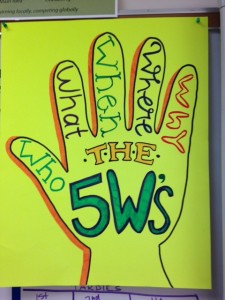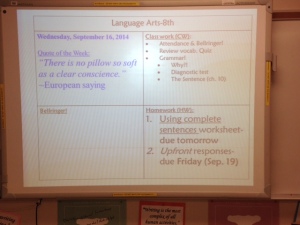SPU EDU 6526 M3
I am a new teacher. I will begin my first year of teaching at an elementary school with special education students with severe disabilities. I am trying to learn as much as I can (and will continue to seek out knowledge) about effective research based teaching strategies. What is effective in one teaching setting might be less effective in another. Used at the beginning of lessons, strategies such as ‘cueing, questioning, and advance organizer techniques can focus learning on the content to be presented. “Such an approach can motivate students by tapping into their curiosity and interest in the topic,” (Dean, et al. 2012). Cues and questions should focus on what is important, be explicit, inferential and analytical. I have used cues in the classroom when I have told students what to pay attention to ahead of time or shown them a rubric of what is expected in an assignment coming up. My intention when I question students prior to introducing material is often to determine prior knowledge and figure out what information I need to include in a lesson in order for it to be most effective. “When teachers ask questions that require students to make inferences…students draw upon what they already know to ‘fill in the blanks’ and address missing information in the presented material,” (Dean, et al. 2012).
Another teaching strategy I’ve been studying and practicing which is perhaps more useful than previously described is the technique of nonlinguistic teaching strategies. Many students with disabilities struggle with or are unable to read, write or speak. In this case, the use of visual symbols, pictures, videos, etc. can be of great benefit. “These strategies are powerful because they tap into students’ natural tendency for visual image processing, which helps them construct meaning from relevant content and skills and have a better capacity to recall it later,” (Medina, 2008). Examples of using nonlinguistic techniques which I have employed include the use of picture exchange communication type systems. These augmentative and alternative communication (AAC) devices may come in a variety of different forms, but most often students use iPads with applications which resemble a picture exchange system.
As I reflect on my current teaching strategies as it relates to advance organizers, with rubrics from the text A Handbook for Classroom Instruction that Words (Pitler & Stone, 2012 pgs. 145), I feel that I am strongest in the area of ‘graphic organizers’; I would rate myself a 3 in this area. I consistently use a variety of graphic organizers with my students. I like a colorful classroom with posters including graphic organizers on the walls. I taught journalism to a group of 8th graders last year and had posters regarding the “5 W’s”, “What to include in an essay”, and “Questions to ask yourself before you begin writing.”
I also used (and intend to continue to use) a daily PowerPoint slide which includes what students may expect for the day. This example is from the journalism class I taught last year. I addition to cuing the students it was very helpful to keep myself organized.
In terms of the rubric about making physical models or manipulatives, I would rate myself a 2. I occasionally use physical models and manipulatives to help students develop an understanding of abstract concepts. This is an area in which I plan to place more focus. Students have different styles of learning including visual, auditory, and kinesthetic. I am a visual learning and learn by doing. I am an avid note taker in my own career as a student, and can’t read anything without a highlighter in my hand.
By including a learning activity in which students paint, draw, built or use technology to create symbolic pictures to represent the knowledge being learned, I would be improving on another two rubrics; “Create Pictures, illustrations and pictographs”, and “Make physical models or manipulatives”. I am an avid crafts person and enjoy creating craft projects for students. I can certainly increase the pertinence of these activities. In my career, I will be teaching to students who have a variety of different learning styles and abilities. By being sensitive and using techniques which reach different types of learners I can attain the best possible outcome for student learning.
Sources:
Dean, C. B., et al. (2012). Classroom Instruction that Works; Research-based Strategies for Increasing Student Achievement. (2nd ed.). Alexandria, VA: ASCD, Denver, CO: MCREL Mid-continent Research for Education and Learning.
Medina, J. (2008). Brain Rules: 12 Principles for Surviving and Thriving at Work, Home and School. Pear Press.
Pitler, H. & Stone, B. (2012). A Handbook for Classroom Instruction that Works (2nd ed.). Alexandria, VA: ASCD, Denver, CO: MCREL Mid-continent Research for Education and Learning.



